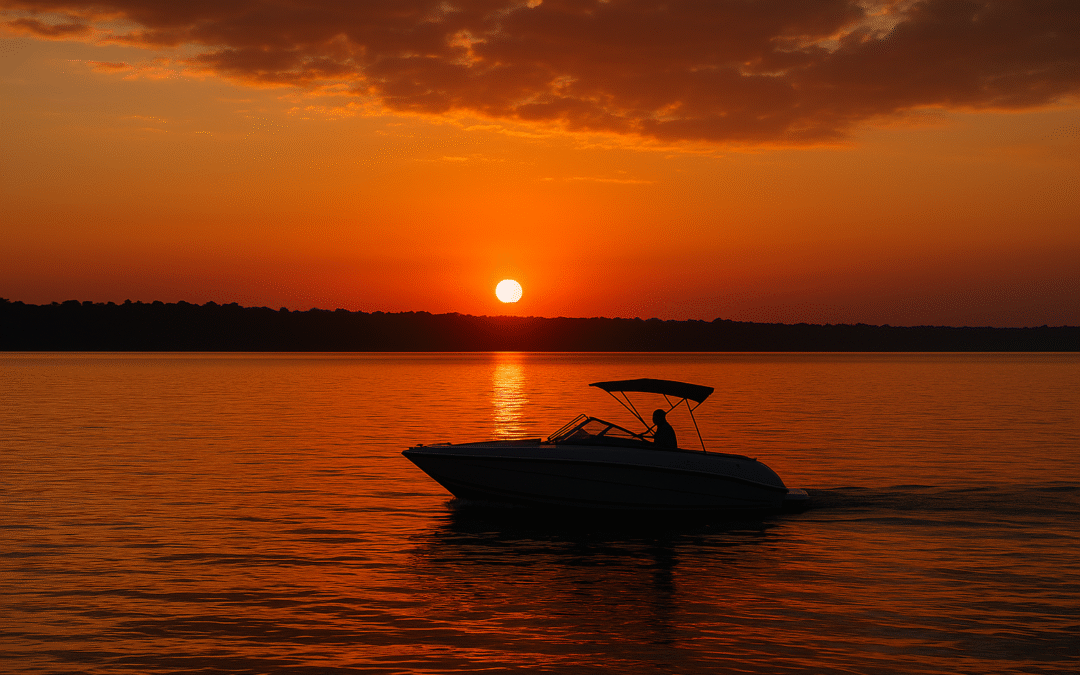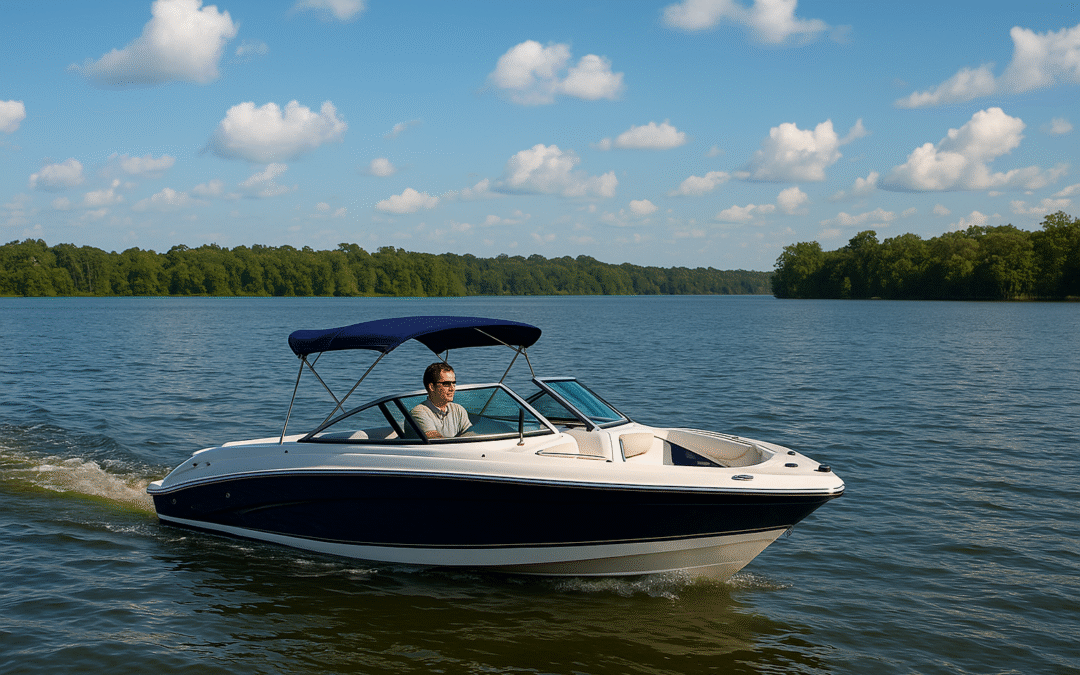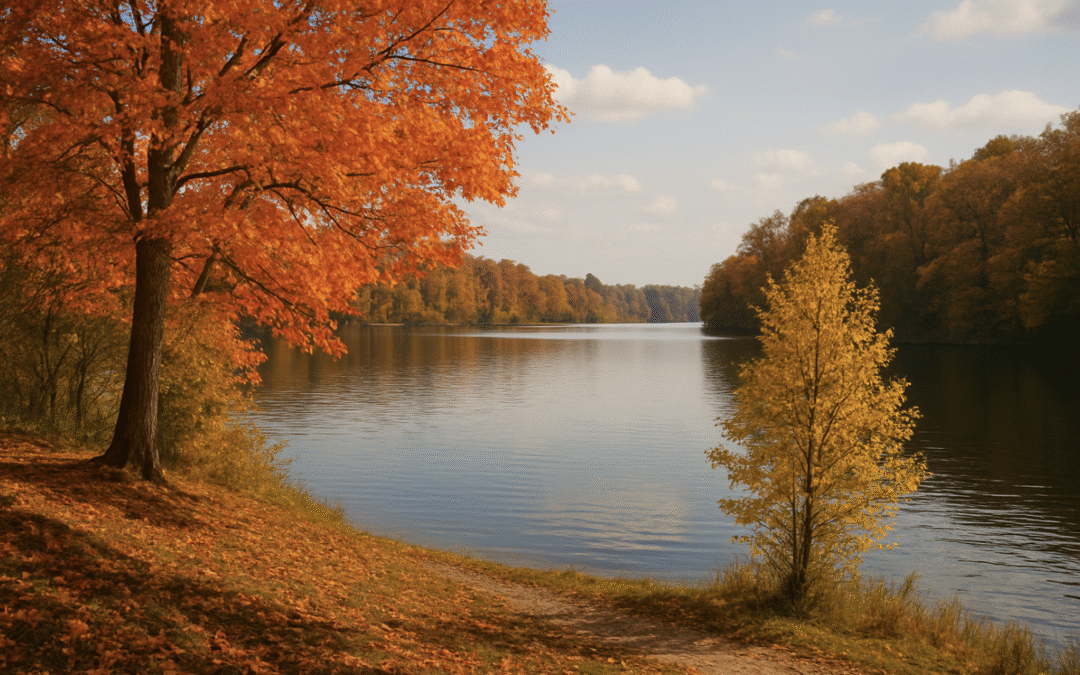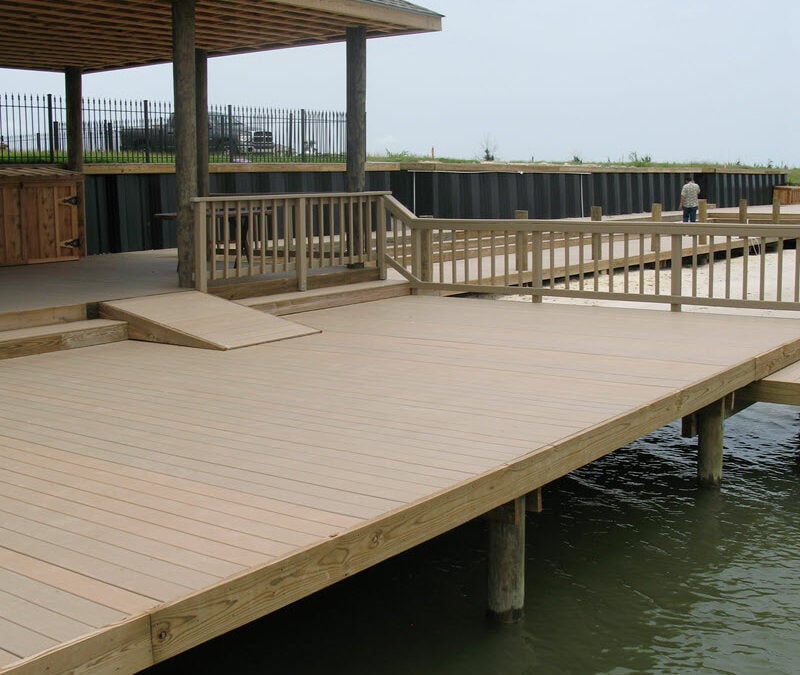The Mississippi Gulf Coast is renowned for its breathtaking shoreline, vibrant communities, and top-notch marine construction expertise. Whether you’re planning to build a new dock, install a boathouse, or construct bulkheads to safeguard your property, the timing of your project is critical. In this article, we’ll explore the ideal time of year to start your marine construction project on the Mississippi Gulf Coast and discuss why seasonality, weather patterns, permitting, and contractor availability all play an essential role in ensuring a successful build.
Understanding the Seasonal Cycle of the Gulf Coast
The Mississippi Gulf Coast experiences a subtropical climate with distinct seasonal variations. While the warm and humid summers are synonymous with lively beach days and bustling marinas, the other seasons also come with their own set of benefits and challenges for marine construction.
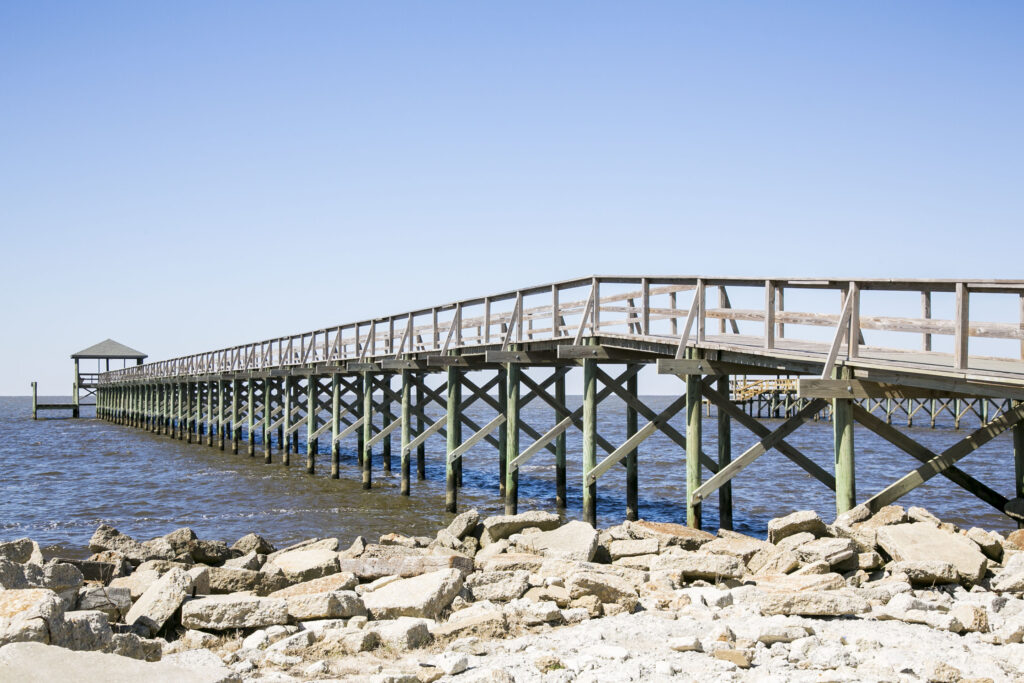
Summer: Abundant Sunlight, But High Temperatures
Summer on the Gulf Coast offers long days with plenty of sunlight, which is beneficial for construction work. Contractors can take advantage of extended daylight hours to complete labor-intensive tasks more quickly. However, the high temperatures and humidity can lead to faster evaporation of concrete, challenging work conditions for crews, and possible delays if workers fall ill. Additionally, summer is the peak season for marine recreation, meaning local demand for services may be higher and scheduling might be competitive.
Fall: Ideal Temperatures and Fewer Weather Interruptions
Fall is widely regarded as one of the best times to commence marine construction. With cooler temperatures and lower humidity, work is often more comfortable and efficient. The chances of severe weather events decrease, and the construction materials—such as marine-grade concrete and treated wood—tend to set and cure more consistently in moderate conditions. Fall also tends to be a less busy season for contractors, meaning you may secure a more competitive bid and schedule more flexibility.
Homeowners planning a fall project benefit from:
- Moderate temperatures that increase worker productivity.
- Reduced risk of hurricanes compared to early summer.
- Less competition for labor and materials, which can lead to cost savings.
Winter: Curbing Storm Risks but Facing Shorter Days
Winter on the Gulf Coast is milder than in many parts of the country, but it still brings cooler temperatures and shorter daylight hours. While the risk of hurricanes drops significantly, the shorter work days can slow project progress. In addition, some construction materials respond differently in cold weather, potentially affecting their longevity or the curing process of concrete used in docks, bulkheads, or piers.
For marine projects in winter, proper planning is key. Contractors might work longer hours to maximize the limited daylight or use supplemental lighting and heat to maintain optimal working conditions. Winter projects also offer the advantage of lower insurance premiums and reduced competition from other construction projects.
Spring: A Transitional Season with Opportunities and Precautions
Spring represents a transitional period that offers both opportunity and risk. The weather in spring generally improves from winter’s chill, with increasing temperatures and longer days. This season is ideal for projects that require gradual progress and precision, as the moderate conditions allow for steady material curing. However, spring can also bring sudden rainstorms and the start of the Atlantic hurricane season later in the period, so projects must be designed with drainage and waterproofing in mind.
Spring projects are often favored by homeowners who want to see their marine construction finished before the busy summer months. By starting in early spring, contractors can leverage the increasing daylight and mild weather to gain momentum while avoiding the intense heat of summer
Weather Patterns and Their Impact on Marine Construction
When planning any construction project, weather is a pivotal factor. On the Mississippi Gulf Coast, the weather can vary drastically from season to season, affecting everything from material performance to worker safety.
The Role of Temperature and Humidity
Temperature and humidity levels greatly influence the performance of construction materials. Concrete, for instance, cures differently in high heat and humidity. If concrete sets too quickly under intense summer conditions, it can lead to cracking or reduced durability. In contrast, cooler temperatures in the fall or early spring allow for a more uniform curing process, resulting in stronger, longer-lasting structures.
For projects that involve heavy marine construction components—like docks, seawalls, and bulkheads—ensuring that materials cure appropriately is essential for safety and longevity. Using weather-appropriate curing techniques and additives can help mitigate some of these challenges.
Precipitation and Storm Risk
Precipitation levels and the risk of severe storms are another critical consideration. The summer months, while sunny, also bring the possibility of sudden thunderstorms and tropical storms. The fall, while generally stable, can sometimes experience lingering rain. Winter typically sees lower precipitation levels, but the decreased daylight can slow down work.
Understanding local weather forecasts and historical climate data is crucial. Many experienced marine contractors use long-term weather trends to schedule projects during the time of year that offers the best balance of consistent conditions and minimal risk.
Wind and Wave Conditions
Wind speed and wave action are particularly important for marine construction. High winds not only make construction work dangerous, but they can also affect the installation and stability of structures like docks and boathouses. Calm and predictable water conditions contribute to smoother piling operations and safer working conditions for specialized equipment.
Seasonal trends indicate that the best periods for marine construction are when both wind and wave activity are at their lowest. Typically, this tends to be in the fall when the weather is transitioning from the intense summer heat to the cooler, more stable conditions of winter.
Permitting and Contractor Scheduling Considerations
Beyond the weather, timing your project according to local permitting cycles and contractor availability is essential.
Permitting Timelines on the Gulf Coast
Securing the appropriate permits for a marine construction project on the Mississippi Gulf Coast can be a lengthy process. Government bodies such as the Mississippi Department of Environmental Quality (MDEQ) or local planning and zoning boards have specific windows for reviewing applications. Starting your project during a season when permit processing is efficient can save you valuable time. Many contractors advise beginning the permit application process in the fall, so that permits are secured in time for a winter or early spring build when the weather is favorable for controlled work conditions.
Contractor Availability and Project Bidding
Marine construction is highly seasonal. During the peak summer months, contractors are often booked well in advance due to high demand from both residential and commercial clients. Waiting until the fall or winter can sometimes result in better pricing, faster turnaround times, and more personalized service.
Contractors also plan their work schedules around seasonal weather patterns, so many prefer to start projects during the most predictable periods. When speaking with potential marine construction companies, ask about their seasonal calendars and how they adjust project timelines based on the time of year.

Project Type Considerations
Different types of marine construction projects may have unique timing requirements based on their complexity and technical demands.
Docks and Piers
Docks and piers are among the most popular projects on the Mississippi Gulf Coast. These structures require precise alignment, proper piling, and a secure foundation. Weather variations can affect underwater conditions and, ultimately, the success of a dock project. Many experts agree that starting dock construction in the fall offers a balance between favorable weather conditions and reduced contractor competition.
Boathouses and Boat Lifts
For boathouses and boat lifts, timing can be critical—especially if your project includes complex electrical installations, lifts, or integrated storage solutions. The fall and early spring are ideal because moderate temperatures facilitate the functioning of electrical components and the curing of any concrete work. Moreover, building in these seasons means you can enjoy the fully completed project by summer when the coastline is most active.
Bulkheads, Seawalls, and Shoreline Stabilization
Bulkheads and seawalls require careful planning, as they must withstand both the ebb and flow of the tides and potential storm surges. Construction during the fall or early winter is often recommended because water conditions tend to be calm and consistent. By contrast, the summer’s unpredictable storms can undermine the integrity of these critical structures.
Economic and Logistical Advantages of Optimal Timing
Choosing the right time of year doesn’t just benefit the physical construction process—it also has significant economic and logistical advantages.
Cost Efficiency and Resource Management
When you schedule a marine construction project during the optimal season, you can avoid the high demand and inflated costs typical of the busy summer months. Lower contractor demand in the fall and winter often translates to more competitive bids, while steady weather conditions reduce the risk of costly delays.
Additionally, material costs can fluctuate seasonally. Many suppliers offer off-peak pricing during less busy periods, allowing you to allocate more of your budget to quality construction and fewer funds to contingency costs.
Better Quality and Fewer Rework Issues
Projects started during a season with predictable weather conditions are less likely to face unexpected interruptions. Consistent temperature and humidity aid in the proper curing of concrete and the reliable performance of marine-grade materials. The result is a higher-quality, longer-lasting build that requires less rework and fewer repairs down the line.
The peace of mind that comes from knowing your project is built on a reliable schedule is invaluable—especially when considering the long-term impact on your property and its resale value.
Availability of Design and Engineering Services
Optimal timing also extends to the design and engineering phases of your project. Architectural and engineering services tend to be less hurried during off-peak periods, allowing for more detailed planning and careful execution. Thorough planning upfront ensures your marine construction project meets all local codes, performs well under stress, and integrates seamlessly with your property’s natural landscape.
Environmental Considerations
Building on the Mississippi Gulf Coast isn’t just about convenience and cost—it’s also about respecting and enhancing the natural environment. This is particularly important in marine construction, where water quality, coastal erosion, and wildlife are key concerns.
Preserving Natural Shorelines
During the fall and winter, natural vegetation is often at a lull, which can provide an opportunity for careful integration of construction with natural erosion control. Innovative approaches, such as living shorelines, combine traditional bulkhead construction with native plants and eco-friendly materials, creating a buffer against erosion while enhancing the local ecosystem.
Minimizing Environmental Disruption
Weather patterns dictate not only human activity but also wildlife behavior. By scheduling projects during seasons when local wildlife is less active (such as avoiding the nesting season for birds), you help minimize environmental disruption. Many local permitting agencies now require environmental impact studies, so aligning your project with environmentally sensitive windows can streamline approvals and reduce potential delays.
Frequently Asked Questions About Timing Your Marine Construction
To further assist homeowners, here are some of the most commonly asked questions about marine construction timing on the Mississippi Gulf Coast:
When Is the Most Cost-Effective Time to Build?
Many experts recommend the fall as the most cost-effective time due to moderate weather, lower contractor demand, and favorable material pricing. However, if you can plan ahead, early spring is also an excellent time—provided you’re prepared for occasional rain and the onset of the hurricane season.
How Does Hurricane Season Affect Construction?
Hurricane season typically runs from June through November. Building during these months can be risky not only because of high winds and heavy rain but also because of the potential for storm damage to materials and delayed curing times. Scheduling critical construction work outside of peak hurricane times—ideally in the fall before storms intensify, or early in the spring—helps ensure a more secure build.
What Should I Consider When Scheduling Permits?
Permit processing times can vary, so it’s crucial to consult with your contractor early in the planning process. Many permits are reviewed during the off-peak season, which might favor a fall or winter project. Ensure that you factor in extra time for any unexpected delays related to weather or local policy changes.
Is It Better to Build in Winter or Spring?
Both seasons offer advantages. Winter projects may benefit from lower insurance rates and decreased competition, while spring projects provide longer daylight hours and improved conditions for material curing. The best choice depends on your project’s specific needs and your contractor’s recommendations.

Planning Your Project Timeline
Once you’ve determined the optimal season for your marine construction, the next step is to develop a detailed project timeline that covers every phase of the process. A well-structured timeline typically includes:
- Pre-Construction Planning: Site evaluation, design meetings, and permit applications should start several months in advance. Engaging with local experts and reviewing historical weather data can be invaluable.
- Material Procurement: Ordering materials during the off-peak season can secure better pricing and timely delivery.
- Construction Phase: Scheduling work during predictable weather windows can ensure maximum efficiency and quality. Expect more rapid progress during the fall or early spring.
- Post-Construction Inspections and Maintenance: Allow time for thorough inspections once construction is complete, and plan for seasonal maintenance to protect your investment.
Contractors with local experience, like our team at Lamulle Construction, know how to structure these timelines effectively. They also have proven relationships with suppliers and permitting agencies that can help smooth the entire process.
Real-Life Success Stories
Many homeowners along the Mississippi Gulf Coast have reaped the benefits of starting their marine construction projects at the right time of year. Consider the following examples:
One family in Biloxi began a dock renovation project in the fall. By leveraging the cooler weather and reduced contractor demand, they finished the project ahead of schedule and within budget. Their newly built dock has not only enhanced their property’s aesthetic appeal but has also increased its market value.
In another instance, a couple in Gulfport decided to expand their boathouse in early spring. With carefully planned design modifications and pre-secured permits, the project progressed smoothly. The couple now enjoys a state-of-the-art boat lift and a secure, comfortable space to store their vessel, all thanks to optimal timing that minimized weather-related delays.
These stories are a testament to how critical project timing is. They also highlight the value of working with experienced marine contractors who understand the unique rhythms of the Gulf Coast.
The Competitive Edge of Getting It Right
Starting your marine construction project at the right time offers a competitive edge that extends far beyond budget savings. It can also improve the overall quality of your build, reduce stress for both homeowners and contractors, and contribute to long-term satisfaction with your waterfront property.
When conditions are ideal, materials perform better, crews work more efficiently, and unforeseen delays are minimized. The result is a project that not only meets but often exceeds your expectations. In today’s competitive real estate market, that can make all the difference when it comes to property value and personal enjoyment.
Looking Ahead: Maintenance and Future Upgrades
Even after your marine construction project is complete, timing remains an important consideration. The cyclical nature of weather on the Mississippi Gulf Coast means that regular maintenance is crucial to preserve the quality and longevity of your investment.
Many marine structures require annual inspections, especially after the hurricane season. Routine maintenance—such as checking boat lifts, resealing wood structures, and reinforcing bulkheads—ensures that your waterfront property stays safe and visually appealing year after year. Incorporating scheduled upgrades during off-peak seasons further prolongs the life of your construction work and keeps your property in top condition.
Additionally, planning for future upgrades or expansions can also be timed to coincide with the best weather windows, ensuring that all phases of the project are as efficient and cost-effective as possible.
Environmental and Regulatory Considerations
Building along the Mississippi Gulf Coast isn’t just about personal enjoyment and financial investment—it’s also about environmental responsibility. Careful planning ensures that marine construction projects comply with local, state, and federal regulations, protecting the delicate coastal ecosystem from overdevelopment or erosion.
By choosing to build during optimal seasons, you not only maximize material performance and project efficiency; you also minimize environmental disruption. Less turbulent weather means less runoff and less disturbance to local wildlife, and it allows for the incorporation of eco-friendly practices such as living shorelines.
Final Thoughts: Why Timing Is Everything
When it comes to marine construction on the Mississippi Gulf Coast, there is no one-size-fits-all answer to the best time to start your project. Instead, it involves a careful balance of weather considerations, permitting logistics, material behavior, and contractor availability. By evaluating these factors—and by choosing a season that aligns with your specific project’s needs—you lay the foundation for a successful, lasting build.
Whether you’re planning to construct a brand-new dock, expand your boathouse, or reinforce your shoreline with bulkheads and seawalls, starting your project at the right time can save you money, reduce stress, and ensure that your new marine structure stands the test of time.
Conclusion: Take the Next Step Today
The Mississippi Gulf Coast is a dynamic region where coastal beauty, resilient infrastructure, and innovative marine construction converge. By understanding the optimal seasons for building and planning your marine construction project accordingly, you can transform your waterfront property into a safe, beautiful, and lasting investment.
At Lamulle Construction, our decades of experience and local expertise mean that we understand exactly what it takes to execute high-quality projects that are built to last. From handling permits and procuring materials to managing construction in the face of seasonal weather challenges, our team is committed to guiding you every step of the way.
Ready to dive in? With the right timing and expert guidance, there’s never been a better opportunity to start your marine construction project on the Mississippi Gulf Coast. Contact us today to schedule a consultation and let us help you bring your waterfront vision to life.


